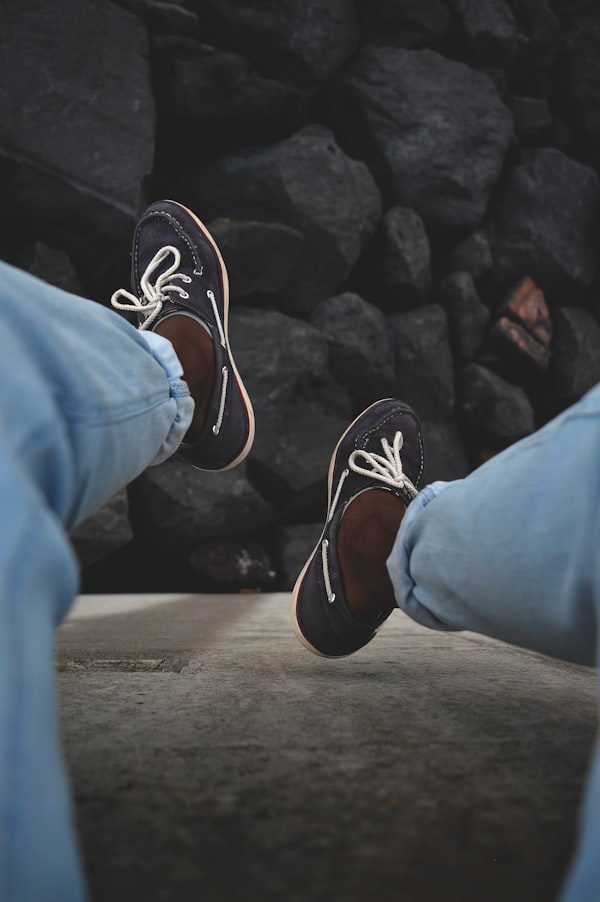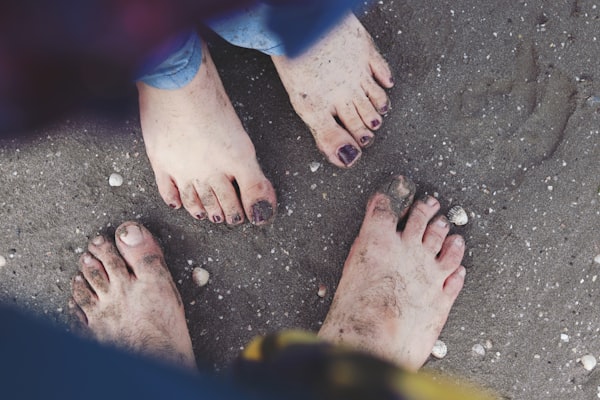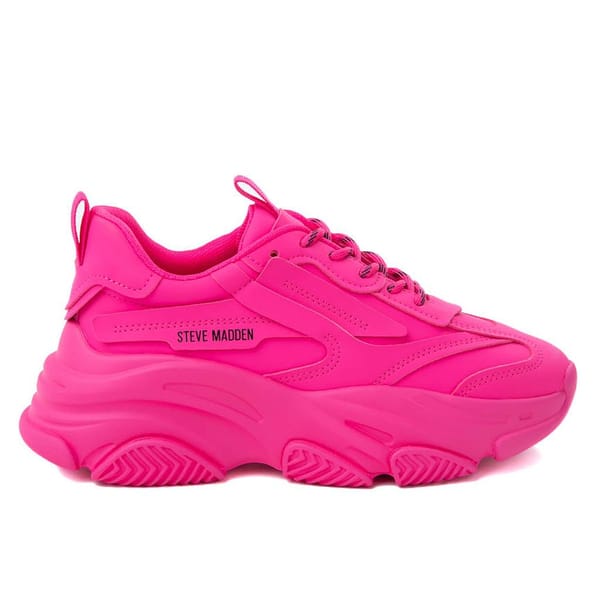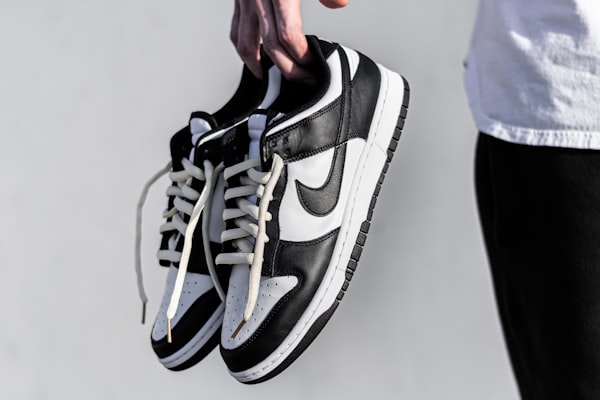Are you a basketball player looking for a way to up your running game? Or are you a runner looking to try a new pair of shoes? If so, you might wonder: Are basketball shoes good for running?
It's a question that has been debated among athletes for years. On the one hand, basketball shoes offer support and cushioning, which could be helpful for runners who need to protect their feet and joints from impact. But, on the other hand, basketball shoes are designed for a different set of movements and may not offer the flexibility or lightweight construction that runners need to go the distance.
As someone who wants to perform their best in basketball and running, you're probably eager to determine which side of the argument is valid. Are basketball shoes potentially a game-changer for your running routine, or are they just a misstep waiting to happen?
Today we explore the pros and cons of wearing basketball shoes for running and help you decide what kind of footwear will best suit your needs. So, let's lace up and hit the court (or the pavement) to find out whether basketball shoes are a slam dunk or a fast break!
The Pros of Wearing Basketball Shoes for Running
Basketball shoes are designed to provide excellent support and cushioning for players who are constantly jumping, landing, and making quick lateral movements on the court. This same support and cushioning can also benefit runners who need to protect their feet and joints from impact during high-impact activities like running. Let's look at some of the pros of basketball shoes for running.
1. Support and Stabilization
One of the main advantages of wearing basketball shoes for running is the support they provide for the feet and ankles. Many basketball shoes have high tops or other features that help stabilize the ankle, benefiting runners needing extra support. Additionally, basketball shoes often have thicker soles than running shoes, which can help absorb shock and reduce the impact of each footstrike.
2. Grip and Traction
Basketball shoes may also offer improved grip, thanks to their specially designed soles. While running shoes are typically designed for forward motion, basketball shoes need to be able to provide traction in all directions. This can be especially helpful for runners who do a lot of trail running or run on uneven terrain.
3. Ankle Stability and Arch Support
Finally, some basketball shoes may offer additional benefits for runners, such as improved ankle stability or arch support. For example, some basketball shoes are designed with unique straps or lacing systems that help to keep the foot securely in place, reducing the risk of injuries like sprains or twists.
Overall, while basketball shoes may not be ideal for serious runners, they offer some benefits that could make them a viable option for those who engage in both sports. Therefore, it's crucial to weigh the pros and cons carefully and choose the footwear best suited to your specific needs and preferences.
The Cons of Wearing Basketball Shoes for Running
While basketball shoes may offer some benefits for running, they are not without their downsides.
1. Heavy and Less Flexible
One of the main issues with wearing basketball shoes for running is that they are often heavier and less flexible than running shoes. This can make them more cumbersome and slow runners down or cause discomfort over long distances.
2. Not Designed for Running
Another potential issue with wearing basketball shoes for running is that they are not explicitly designed to accommodate the unique movements and demands of running. Instead, basketball shoes are designed with the needs of basketball players in mind, which means they may not provide the same level of support or flexibility that runners require. For example, basketball shoes may have a thicker sole or a higher heel drop than running shoes, which can alter a runner's gait and increase the risk of injuries like shin splints.
3. Not Well-Ventilated or Breathable
Additionally, basketball shoes may not be as well-ventilated or breathable because they are designed for a different set of movements than running shoes. This can lead to issues like blisters or hotspots on the feet, especially during longer runs or in hot weather.
4. Not as Comfortable
Finally, wearing basketball shoes for running may simply be less comfortable than wearing shoes specifically designed for running. While basketball shoes may offer some support and cushioning, they may not provide the same level of comfort or fit that runners need to perform their best.
While basketball shoes may offer some benefits for running, they are not necessarily the best choice for serious runners. Therefore, it's essential to carefully consider the potential downsides and risks associated with wearing basketball shoes for running and choose footwear explicitly designed for the sport's unique demands. By selecting the right shoes for your needs, you can help reduce your risk of injuries and improve your overall performance on the road or the court.
Top Picks: Which Basketball Shoes to Consider for Running
While it's generally recommended to wear running shoes for running, here are some basketball shoes that may be suitable for short runs or other low-impact activities:
- Nike Kyrie 7: Features lightweight construction, responsive cushioning, and a durable outsole.
- Reebok Shaq Attaq Modern: Features a lightweight design and responsive cushioning.
- Under Armour HOVR Havoc 2: Features a HOVR cushioning system, which provides a comfortable and supportive ride.
- Adidas Harden Vol. 4: Features a lightweight and breathable upper and a responsive Boost midsole.
- Jordan Why Not Zer0.4: Features a lightweight design, responsive cushioning, and a durable outsole.
- Puma Clyde All-Pro: Features a lightweight construction and responsive cushioning.
Remember that basketball shoes are not specifically designed for running and may not provide the same level of support, cushioning, or flexibility as running shoes. It's generally recommended to wear shoes specifically designed for running to help reduce your risk of injuries and improve your performance.
Top Picks: Alternatives to Basketball Shoes for Running
While basketball shoes may have some benefits for running, it's generally recommended that runners wear shoes specifically designed for the sport. Running shoes are engineered to provide the support, cushioning, and flexibility runners need to perform their best and stay injury-free. Here are some popular running shoe models from well-known brands that you might want to consider:
- Nike Air Zoom Pegasus: A versatile and durable shoe with responsive cushioning and a breathable upper, suitable for various runners.
- Adidas Ultraboost 21: A comfortable and supportive shoe with a responsive Boost midsole and a breathable Primeknit upper.
- Brooks Ghost 14: A cushioned and durable shoe with a smooth ride and a breathable mesh upper, suitable for neutral runners.
- Asics Gel-Kayano 28: A comfortable and stable shoe with excellent support and cushioning, suitable for overpronators.
- New Balance Fresh Foam 1080v11: A plush, cushioned shoe with a roomy toe box and breathable mesh upper suitable for long-distance runners.
- Hoka One One Clifton 8: A lightweight, cushioned shoe with a smooth ride and breathable mesh upper, suitable for runners with high arches.
- Saucony Kinvara 12: A lightweight, responsive shoe with a flexible sole and breathable upper, suitable for fast-paced workouts.
- Mizuno Wave Rider 25: A comfortable and stable shoe with a responsive Wave plate and a breathable mesh upper, suitable for neutral runners.
- On Running Cloudswift: A lightweight, responsive shoe with a durable outsole and breathable upper, suitable for runners who value speed and agility.
Remember, your best running shoe will depend on your needs and preferences. Therefore, trying on several different models and brands is essential to find the ones that work best for your feet and running style.
Tips from Our Editors
When selecting running shoes, it's essential to look for the following key features:
- Lightweight Construction: Running shoes should be as light as possible to minimize the weight on your feet and help you move quickly and efficiently.
- Ample Cushioning: Running shoes should provide enough cushioning to protect your feet and joints from impact without being so thick that they make it difficult to feel the ground.
- Flexibility: Running shoes should be flexible enough to allow your foot to move naturally through each stride without feeling restrictive or uncomfortable.
- Arch Support: Depending on your foot type and running style, you may need running shoes with extra arch support to prevent injuries like plantar fasciitis.
- Breathability: Running shoes should be breathable to help keep your feet cool and dry, especially during longer runs or in hot weather.
- Durability: Running shoes should withstand the wear and tear of regular use, especially if you run frequently or on rough terrain.
- Traction: If you do a lot of trail running or run in wet or slippery conditions, you may want to look for shoes with extra traction to help you stay stable and secure.
- Width Options: If you have wide or narrow feet, you may need running shoes with different width options to ensure a comfortable fit.
- Reflective Elements: If you run in low-light conditions, you may want to look for shoes with reflective elements that help you stay visible to drivers and pedestrians.
- Pronation Support: Depending on your foot type and running gait, you may need running shoes with extra support to help correct overpronation or under pronation.
On a Final Note
While basketball shoes may offer some benefits for running, they are not necessarily the best choice for serious runners. It's like trying to hit a three-pointer with a bowling ball - sure, you might make the shot, but it won't be pretty.
Ultimately, the key to a successful running game is choosing shoes designed specifically for running, with features like lightweight construction, flexibility, and ample cushioning.
So, if you want to up your running game, leave the basketball shoes on the court and opt for some high-quality running shoes instead. Your feet (and your running times) will thank you!
Related Articles












